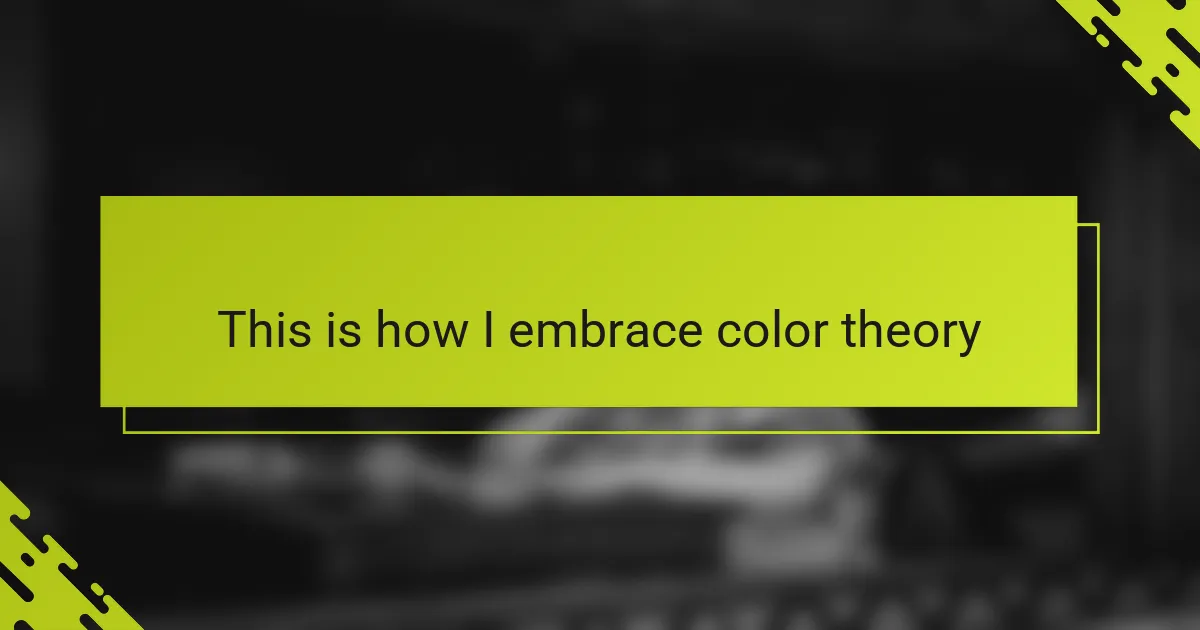Key takeaways
- Color theory is about understanding color relationships and their emotional impact, enabling creative expression.
- Colors can serve as a powerful language for identity and self-expression, allowing individuals to convey personal narratives without words.
- Experimenting with color combinations and understanding their meanings can enhance personal confidence and individuality.
- Color choices in art and fashion can evoke emotions and create connections, reinforcing the importance of intentionality in color selection.
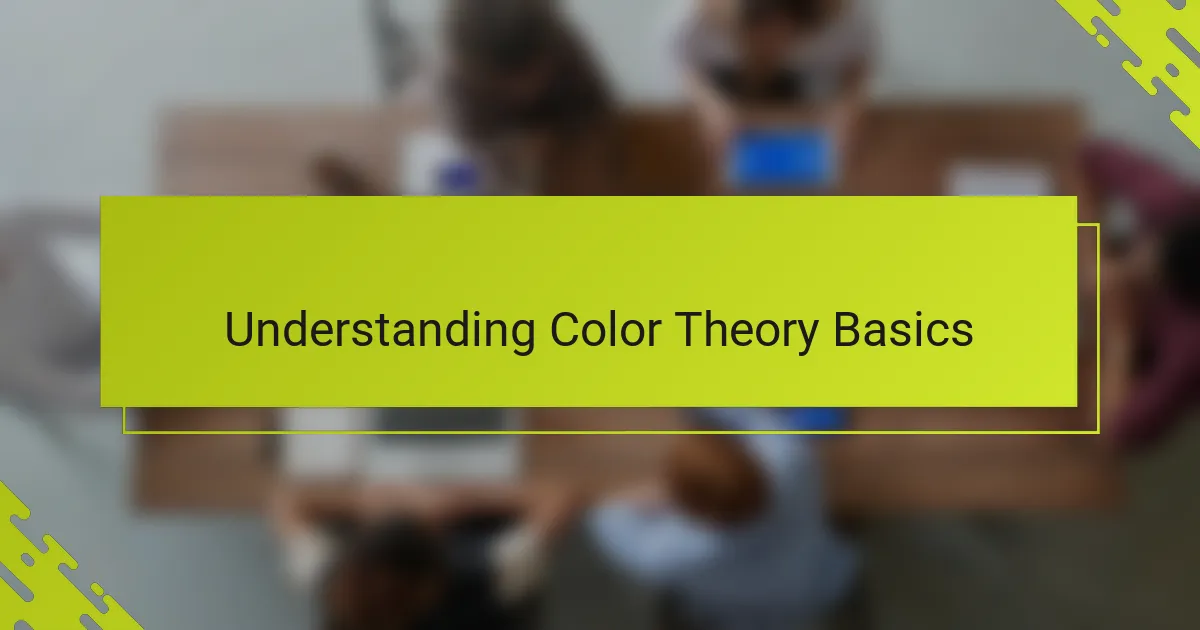
Understanding Color Theory Basics
Color theory is often seen as this complex set of rules, but for me, it’s really about understanding how colors relate and affect each other. At its core, it’s about the color wheel—primary colors like red, blue, and yellow create all the others when mixed. Isn’t it fascinating how such a simple circle can unlock so much creative potential?
When I first started exploring color theory, I remember feeling overwhelmed by terms like complementary and analogous colors. But then I realized it’s more about how these combinations make me feel—like the calm harmony of blues and greens or the energetic clash of red and green. Have you ever noticed how certain color pairings instantly change your mood?
What’s really stuck with me is the idea that color isn’t just decoration; it’s communication. When I choose colors based on theory, I feel like I’m telling a story without words—whether it’s bold confidence with contrasting hues or gentle vulnerability in soft pastels. How do you think color communicates your own identity?
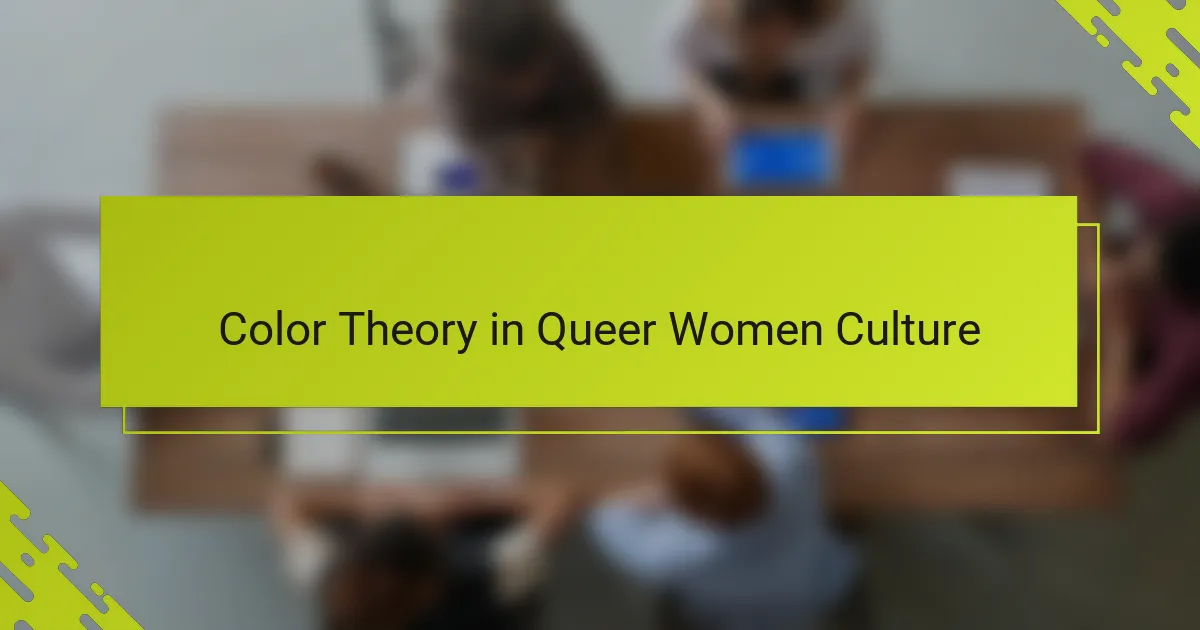
Color Theory in Queer Women Culture
Color theory in queer women culture goes beyond aesthetics—it becomes a language of identity and resistance. I’ve noticed how certain shades carry deep resonance, like the rich lavender symbolizing empowerment or the vibrant teal embodying uniqueness. Have you ever wrapped yourself in a color that instantly felt like a declaration of who you are?
There’s something profoundly affirming about blending colors that break from traditional norms. I remember mixing unexpected hues just to challenge the idea of what “should” go together, and in that act, I found a kind of freedom that mirrors queer expression itself. Doesn’t that remind you of how we often redefine norms in our own lives?
Ultimately, color theory offers queer women a toolkit for visibility and celebration. By thoughtfully combining colors, we craft visual stories that shout pride or whisper vulnerability—it’s a way to hold space for every shade of our experience, loud or quiet. How might you use color to tell your own story today?
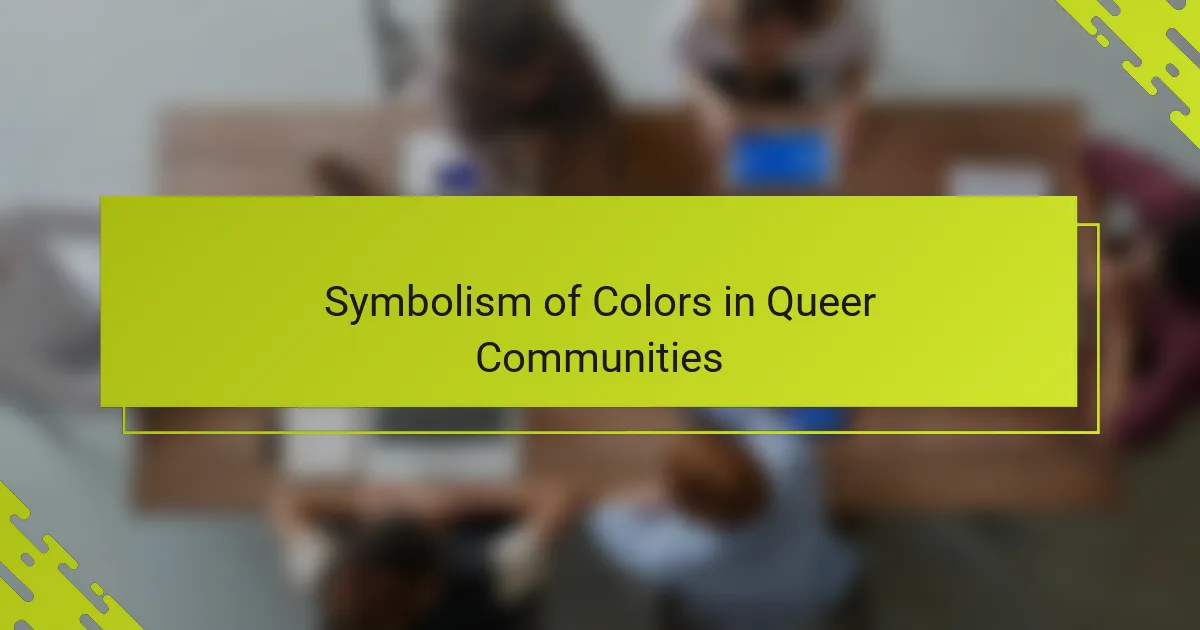
Symbolism of Colors in Queer Communities
Colors in queer communities often carry layers of meaning that go beyond what meets the eye. For example, the rainbow flag isn’t just a pretty spectrum—it’s a powerful symbol of diversity, inclusion, and pride. When I first saw those bold stripes, I felt an immediate sense of connection, like the colors themselves were saying, “You belong here.”
Lavender holds a special place for me, too. Historically associated with queer identity and resistance, it’s this beautiful mix of calming blue and passionate red. Wearing or surrounding myself with lavender feels like wrapping in a quiet but fierce invitation to be authentic. Have you ever found a color that feels like a safe harbor or a bold statement all at once?
Then there are the subtler shades, like teal or pink, each carrying their own whispers of history and meaning. I once experimented with teal in a personal art piece to represent uniqueness and fluidity, and through that process, I realized how color can become an extension of self-expression. What colors do you find yourself drawn to when you want to tell your story without words?
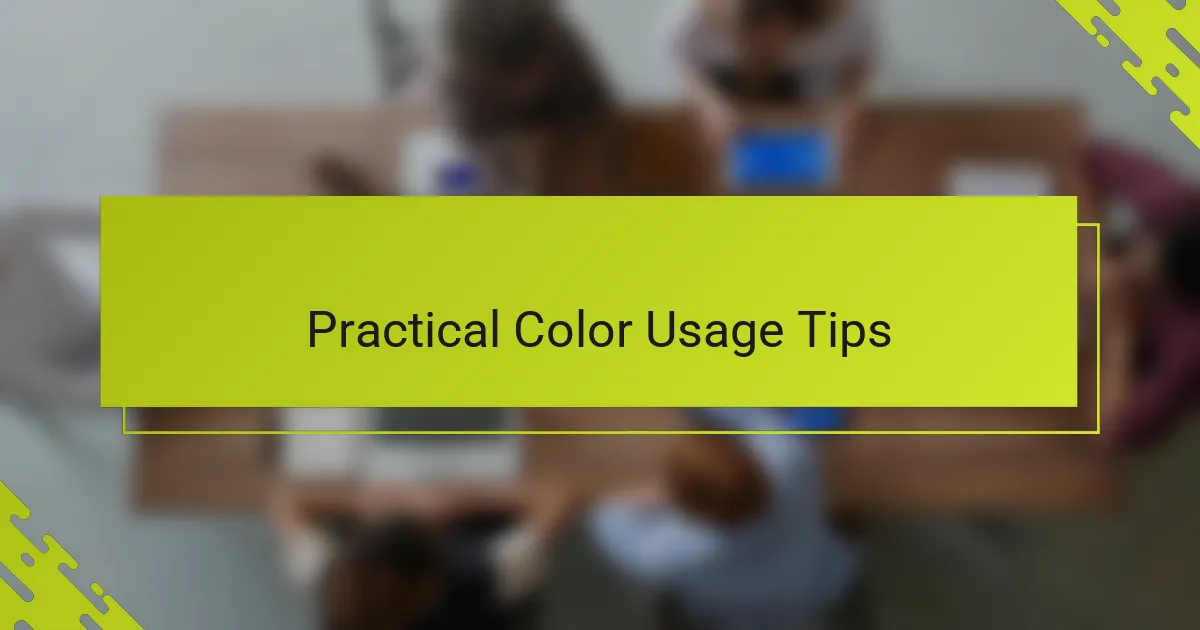
Practical Color Usage Tips
One practical tip I swear by is starting with a dominant color and then layering in accents from its complementary or analogous shades. It’s like setting a mood with one strong feeling and then weaving in subtle hints that enhance without overpowering. Have you ever tried wearing an outfit where one color speaks loudest and the others just quietly back it up?
I also find that playing with saturation and brightness can totally transform how colors feel together. For example, pairing a muted mauve with a vibrant teal creates a dynamic yet balanced contrast that’s both playful and grounded. When was the last time you tweaked a color’s intensity and noticed your whole vibe shift?
Lastly, don’t be afraid to experiment with unexpected color combos—you might find harmony where you least expect it. I once paired a bright coral with deep navy just for fun, and it ended up feeling like an unspoken boldness that perfectly matched a day of confidence. What color experiment could you try this week that might surprise you?
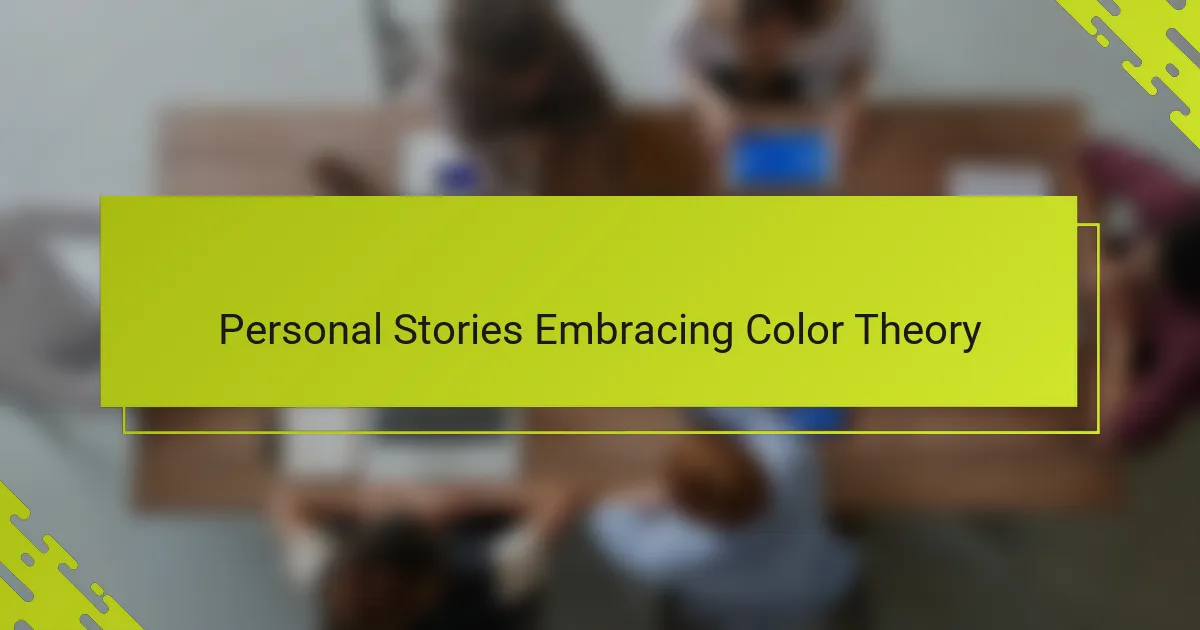
Personal Stories Embracing Color Theory
I remember the first time I deliberately used color theory in my wardrobe—it wasn’t about following rules but about how each hue felt on my skin and in my spirit. Combining mustard yellow with soft mauve, I discovered not just a pleasing palette but a reflection of my own contrasts: warmth and subtlety mixing in harmony. Have you ever worn a color pairing that just felt like it was whispering your story?
There was a moment when I painted a mural with bold reds and deep blues, hesitant at first to clash these powerful colors. But as I blended them, it felt like embracing the tension within myself—the push and pull of identity and expression. That experience taught me that color theory isn’t about perfection but about honoring complexity. Doesn’t that resonate with how we navigate selfhood?
Sometimes, I find color theory an unexpected form of comfort. After a challenging week, wrapping myself in a palette of soft pastels—lavender, sage, and sky blue—felt like a gentle embrace, calming and reassuring. It made me wonder: how often do we underestimate the emotional healing power of the colors we choose daily?
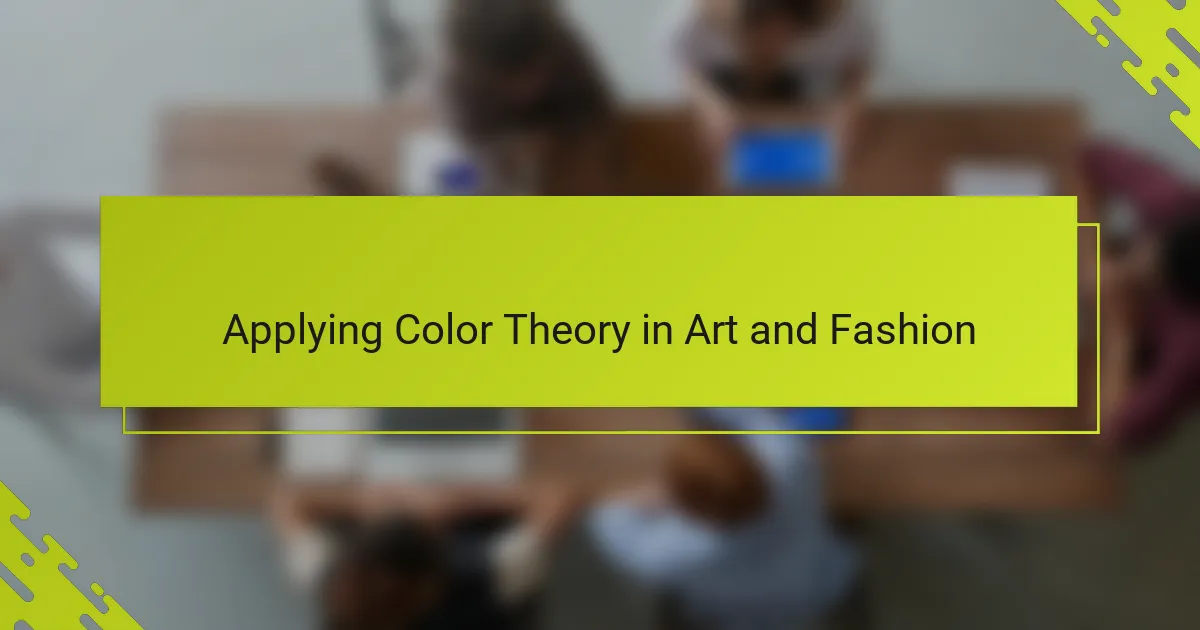
Applying Color Theory in Art and Fashion
Applying color theory in art and fashion feels like weaving emotion into every brushstroke or fabric fold. When I layer contrasting colors in a painting, it’s not just about visual balance—it’s about creating moments of tension and release that echo real-life complexities. Have you ever noticed how a sudden pop of color in an outfit can shift your entire mood?
In my fashion experiments, I often play with analogous colors—those sitting side by side on the wheel—to build outfits that feel effortlessly harmonious, like a quiet conversation between shades. One time, combining soft coral with peach and dusty rose made me feel both grounded and radiant, a subtle celebration of self. Isn’t it amazing how color choices can become a personal dialogue without a single word?
But sometimes, I intentionally break the “rules” by pairing complementary colors to spark energy and boldness. Wearing electric blue alongside a fiery orange isn’t just a style statement—it’s a way to claim space unapologetically. How could color theory help you express the parts of yourself that words don’t capture?

Building Confidence Through Color Choices
Choosing colors intentionally has been a game-changer for my confidence. When I wear shades that resonate deeply—like a powerful crimson or a serene teal—I feel seen in ways words can’t express. Have you ever noticed how a particular color instantly lifts your spirits or makes you stand taller in the room?
I’ve also found that understanding which colors complement or contrast with my natural tone gives me a sort of inner assurance. It’s like dressing not just my body but my energy; knowing that my choices highlight my best features helps quiet those self-doubts. What color choices make you feel most authentically yourself when you look in the mirror?
Sometimes, the boldest confidence comes from breaking color “rules” and simply trusting your intuition. I remember pairing a vivid orange with soft lavender, and that unexpected combo radiated a fearless vibrancy I hadn’t felt before. Isn’t confidence partly about daring to be uniquely you, no matter what anyone else expects?
